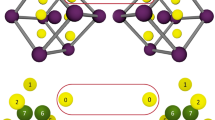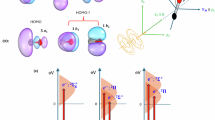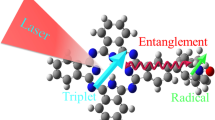Abstract
The origin of the isomeric purity of biomolecules has been extensively discussed1. In particular, it has been suggested that spin-polarized electrons or positrons emerging in the β-decay of radio-active nuclei may have led to a preferential destruction of one of the two isomers at an early stage of evolution and that this process tipped the initial balance of abundance of the two self-replicating isomers2. As experimental tests of this hypothesis have remained largely inconclusive3,4, it seemed useful to investigate the spin dependence of electron scattering from optically active molecules under the simplest possible conditions. Here we describe an experiment which indicates that spin-polarized electrons, like polarized light, when scattered from optically active molecules, can ‘distinguish’ between right-handed and left-handed isomers.
This is a preview of subscription content, access via your institution
Access options
Subscribe to this journal
Receive 51 print issues and online access
$199.00 per year
only $3.90 per issue
Buy this article
- Purchase on SpringerLink
- Instant access to full article PDF
Prices may be subject to local taxes which are calculated during checkout
Similar content being viewed by others
References
Walker, D. C. (ed.) Origins of Optical Activity in Nature xxii + 260 (Elsevier, Amsterdam (1979).
Keszthelyi, L. Origins Life 8, 229–340 (1977); 11, 9–21 (1979).
Bonner, W. A., Van Dort, M. A. & Yearian, M. A. Nature 258, 419–21 (1975).
Hodge, L. A., Dunning, F. B., Walters, G. K., White, R. H. & Schroepfer, G. J. Jr Nature 280, 250–2 (1979).
Farago, P. S. J. Phys. B 13, L567–717 (1980); 14, L743–8 (1981).
Beerlage, M. J., Farago, P. S., Van der Wiel, M. J. J. Phys. B 14, 3245–53 (1981 ); Corrigendum J. Phys. B 15, 3581 (1982).
Gidley, D. W., Rich, A., Van House, J. & Zitzewitz, P. W. Nature 297, 639–43 (1982).
Reihl, B., Erbudak, M. & Campbell, D. M. Phys. Rev. B19, 6358–66 (1979).
Campbell, D. M., Hermann, C., Lampel, G. & Owen, R. J. Phys. E18, (in the press).
Kuyatt, C. E., Simpson, J. A. & Mielczarek, S. R. Phys. Rev. 138, A385–99 (1965).
Rich, A., Van House, J. & Hegstron, R. A. Phys. Rev. Lett. 48, 1341–4 (1982).
Hayashi, S. J. Phys. B18, 1229–40 (1985).
Gillardi, R. D. & Mitchell, P. R. Trans. Faraday Soc. 65, 2611–20 (1969).
Texter, J. & Stevens, E. S. J. chem. Phys. 69, 1680–91 (1978).
Author information
Authors and Affiliations
Rights and permissions
About this article
Cite this article
Campbell, D., Farago, P. Spin-dependent electron scattering from optically active molecules. Nature 318, 52–53 (1985). https://doi.org/10.1038/318052a0
Published:
Issue date:
DOI: https://doi.org/10.1038/318052a0
This article is cited by
-
Molecular chirality and the origin of life
Journal of Biological Physics (1995)



